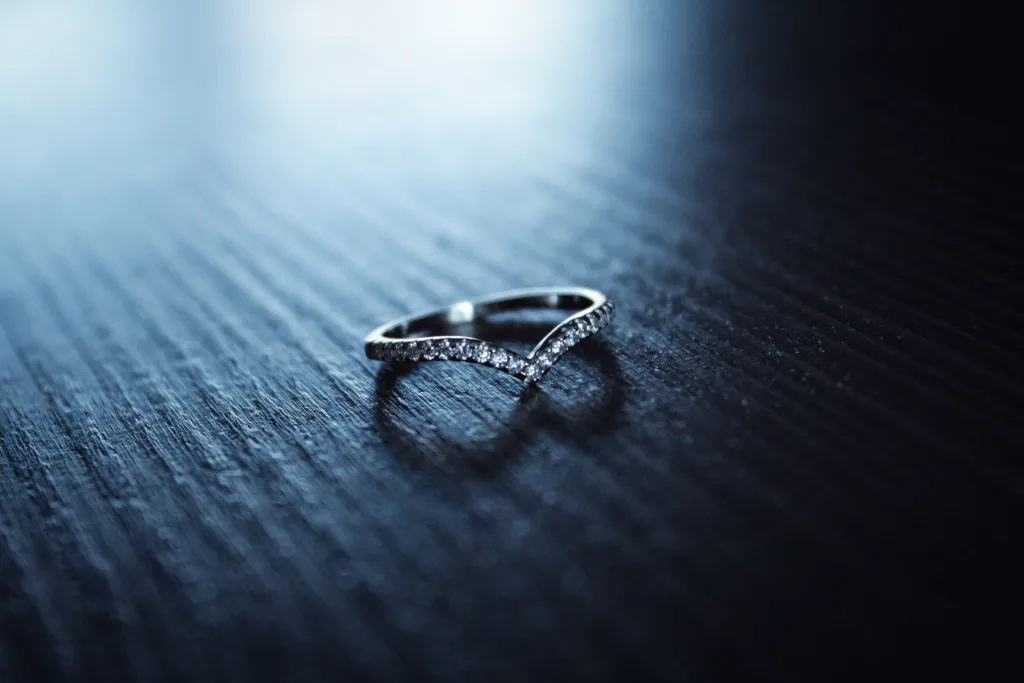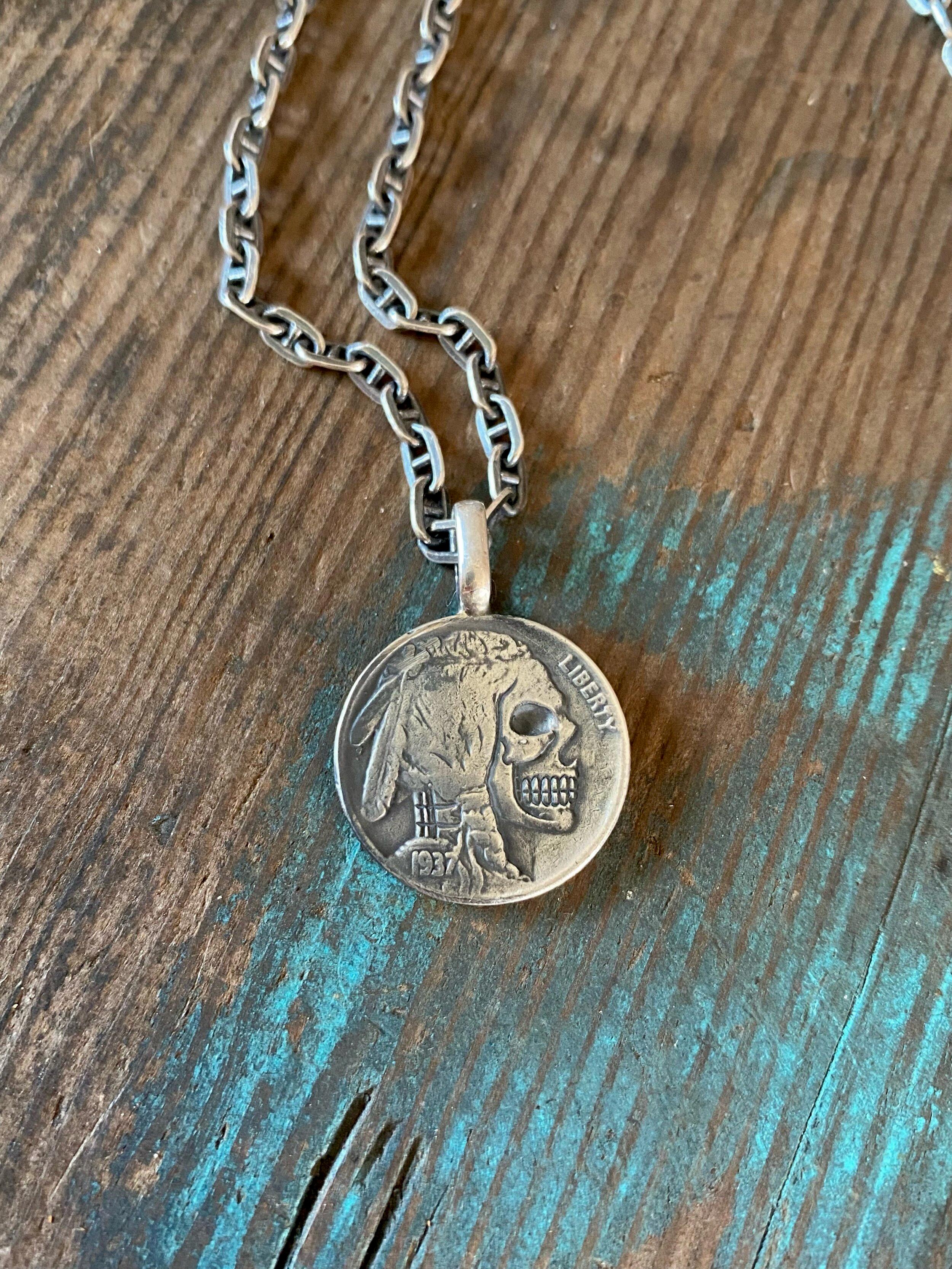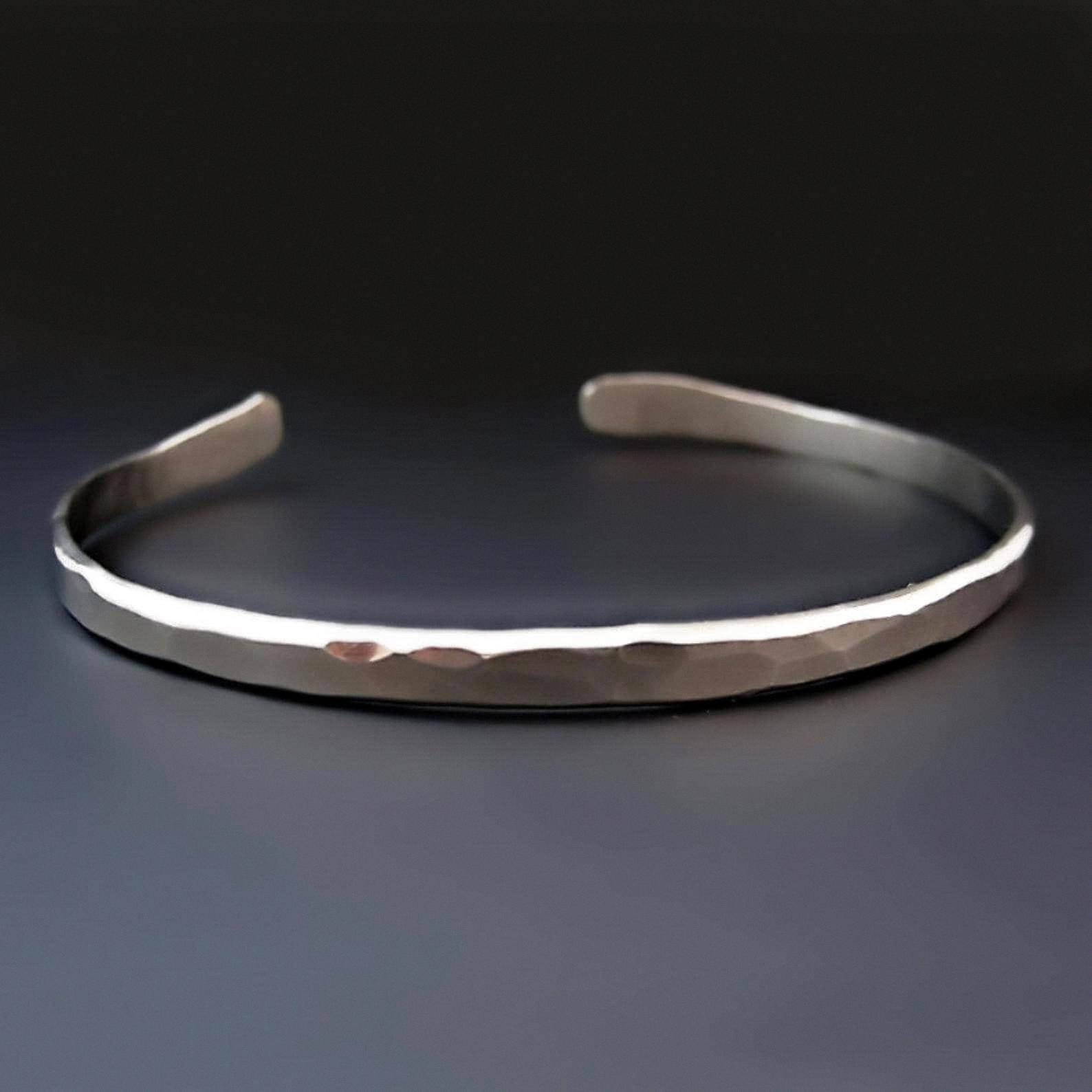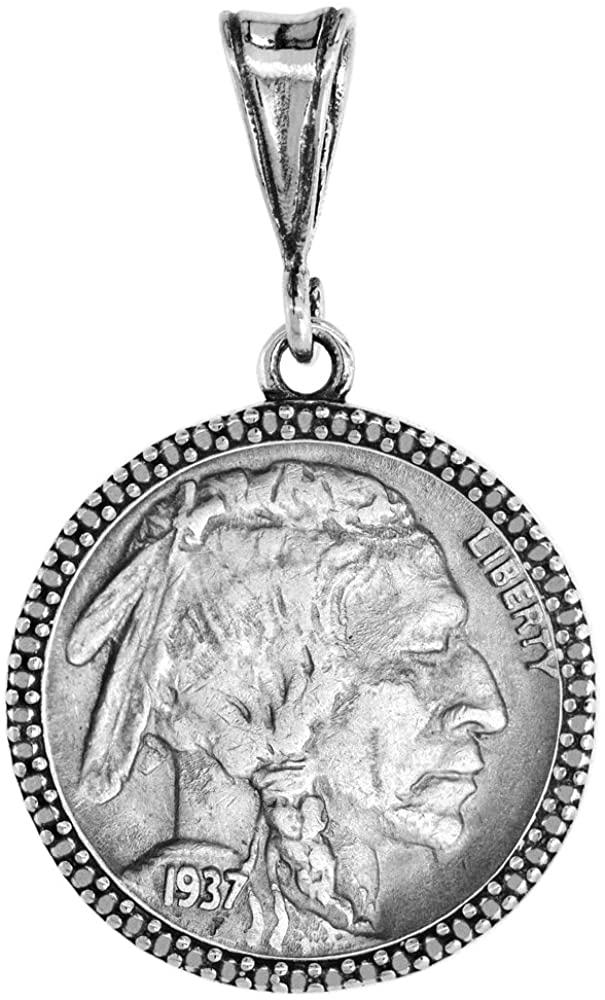Sterling silver is a popular metal used to make jewelry, flatware, and other decorative items. But many people wonder if it contains nickel, a common metal that can cause allergic reactions in some individuals. In this blog post, we’ll explore the properties of sterling silver and whether or not it contains nickel.
First, it’s important to understand what sterling silver is. Sterling silver is an alloy made up of 92.5% silver and 7.5% copper. The copper is added to give the silver strength and durability. The resulting metal is a bright, shiny silver color and is often used in jewelry making.
So, does sterling silver have nickel in it? The answer is no, sterling silver does not contain nickel. However, some people may still have an allergic reaction to sterling silver due to the presence of copper. Copper allergies are less common than nickel allergies, but they do occur. If you have a knon allergy to copper, it’s best to avoid sterling silver jewelry or other items that contain copper.
If you’re looking for nickel-free jewelry options, sterling silver is a good choice. Other nickel-free metals include pure copper, platinum, and titanium. It’s important to note that white gold may contain nickel, so if you’re allergic to nickel, it’s best to avoid white gold or to look for white gold that is specifically labeled as nickel-free.
If you do choose to wear sterling silver jewelry, it’s important to take care of it properly. Sterling silver can tarnish over time, so it’s important to store it in a dry, cool place and to clean it regularly. You can use a soft cloth or a silver polishing cloth to gently remove any tarnish or dirt.
Sterling silver does not contain nickel, but it may still cause an allergic reaction in some people due to the presence of copper. If you’re looking for nickel-free jewelry options, sterling silver is a good choice, as are pure copper, platinum, and titanium. Be sure to take care of your sterling silver jewelry properly to keep it looking its best.
Is Sterling Silver Safe for Those with Nickel Allergies?
Sterling silver is generally safe for people with nickel allergies. It is an alloy that contains 92.5% silver and only 7.5% copper, making it a low-nickel option. However, it is important to note that some people may still be allergic to silver or copper, which are both present in sterling silver. If you have a severe nickel allergy, it is recommended to do a patch test before wearing any jewelry made from sterling silver or consult with a dermatologist. sterling silver is a popular choice for people who want to wear nickel-free jewelry.

Types of Metal That Are Nickel-Free
Nickel is a common metal that is often used in jewelry making, but it can cause allergic reactions in some people. If you are one of these individuals, you may want to choose jewelry that is made of nickel-free metals. Fortunately, there are many metals that do not contain nickel. Surgical-grade stainless steel is a popular choice for nickel-free jewelry, as it is durable, hypoallergenic, and easy to care for. In addition, you can choose jewelry made of 14-, 18-, or 24-karat yellow gold, as these gold alloys do not contain nickel. Pure sterling silver, copper, platinum, and titanium are other options for nickel-free jewelry. It’s important to note that white gold may contain nickel, so if you are looing for a white metal, you may want to opt for platinum, which is naturally white and nickel-free. By choosing jewelry made of these metals, you can enjoy wearing stylish and beautiful pieces without having to worry about allergic reactions.
Can Wearing Sterling Silver Jewelry Irritate the Skin?
Sterling silver can irritate your skin if you are allergic to it. Sterling silver is an alloy made up of 92.5% silver and 7.5% other metals, typically copper. This combination can case an allergic reaction in some people, resulting in red, itchy, and bumpy rashes on the skin. This is known as contact dermatitis, and it occurs when the skin comes into direct contact with the metal.
However, it’s important to note that not everyone is allergic to sterling silver, and some people can wear it without any issues. If you suspect that you may be allergic to sterling silver, it’s best to avoid wearing it or to put a physical barrier between the item and your skin. This can include wearing gloves, using a fabric or tape barrier, or coating the jewelry with clear nail polish. It’s also a good idea to speak with a dermatologist if you experience any symptoms of an allergic reaction, as they can provide a proper diagnosis and treatment options.
Can I Wear Sterling Silver Earrings If I Am Allergic to Nickel?
If you are allergic to nickel, you may still be able to wear sterling silver earrings. Sterling silver is an alloy made up of 92.5% pure silver and 7.5% other metals, which can include copper, zinc, and nickel. While sterling silver does contain a small amount of nickel, it is usually not enough to cause an allergic reaction in most people. However, some individuals with severe nickel allergies may still experience discomfort or irritation when wearing sterling silver earrings.
If you are concerned about potential nickel exposure, tere are a few things you can do to minimize your risk. Look for sterling silver earrings that are labeled “nickel-free” or “hypoallergenic.” These products have undergone additional testing and certification to ensure that they contain minimal levels of nickel. You can also try coating your earrings with a clear nail polish to create a barrier between your skin and the metal.
Ultimately, the decision to wear sterling silver earrings if you are allergic to nickel is a personal one. If you experience any discomfort or irritation, it’s best to remove the earrings and speak with a healthcare professional about alternative options.
Wearing Jewelry When Allergic to Nickel
If you’re allergic to nickel, you’ll want to look for jewelry made from metals that are less likely to cause a reaction. Some good options include nickel-free stainless steel, surgical-grade stainless steel, titanium, 18-karat yellow gold, and nickel-free yellow gold and sterling silver. Surgical-grade stainless steel may contain some nickel, but it’s generally considered hypoallergenic for most people. Be sure to read labels or ask a jeweler for informatin about the metal content of any jewelry you’re considering. Additionally, avoid jewelry with a base metal that is plated with nickel, as the plating can wear off over time and expose your skin to the nickel underneath.

Source: redrabbittradingco.com
Avoiding Nickel with a Nickel Allergy
If you have a nickel allergy, it is important to avoid exposure to nickel-containing items as much as possible. This means avoiding jewelry, watches, and other metal accessories that may contain nickel. You sould also avoid clothing fasteners, such as zippers, buttons, and snaps, that may contain nickel. In addition, be careful when handling metal objects like keys, coins, and tools.
When it comes to your diet, there are certain foods that are high in nickel and should be avoided if you are extremely sensitive to nickel. These foods include soy products such as soybeans, soy sauce, and tofu, as well as licorice, buckwheat, cocoa powder, clams, cashews, and figs. It is important to read food labels carefully and avoid foods that contain nickel as an ingredient or are known to be high in nickel.
It is also important to note that some medical devices, such as dental braces and orthopedic implants, may contain nickel. If you have a nickel allergy, it is important to inform your healthcare provider about your allergy so that they can take appropriate precautions. In some cases, alternative materials may be used for medical devices to avoid an allergic reaction.
With a nickel allergy, it is important to be aware of potential sources of nickel exposure and take steps to avoid them to reduce the risk of an allergic reaction.
Treating Nickel Allergy
Unfortunately, there is no cure for nickel allergy. Once you develop an allergy to nickel, you will always be sensitive to it. However, there are some steps you can take to manage symptoms and prevent further exposure:
1. Avoid nickel-containing products: To prevent contact with nickel, you should avoid wearing jewelry, clothing, or other products that cntain this metal. Check labels and avoid products made with nickel, such as inexpensive jewelry and zippers.
2. Use a barrier cream: Applying a barrier cream, such as zinc oxide or petroleum jelly, can help protect your skin from coming into contact with nickel. Apply the cream to areas that are likely to come into contact with the metal, such as wrists or earlobes.
3. Take antihistamines: Antihistamines can help reduce itching and inflammation caused by nickel allergy. Over-the-counter options include diphenhydramine (Benadryl) or loratadine (Claritin).
4. Consider allergy shots: Allergy shots (immunotherapy) may be recommended in severe cases of nickel allergy. These shots can help your body build up immunity to the allergen over time.
It’s important to note that if you have a severe reaction to nickel, such as difficulty breathing or swelling of the face or throat, seek emergency medical attention right away.
Identifying Nickel-Free Items
To determine if something is nickel free, you can perform a simple test using a cotton bud. Take a clean cotton bud and gently rub the surface of the item you want to test. If the cotton bud remains clear after rubbing, it means that the item does not contain free nickel and it should not cause dermatitis to someone allergic to nickel. On the other hand, if the cotton bud picks up a pink stain or becomes discolored after rubbing the item, it inicates the presence of nickel in the material. This means that the item may cause an allergic reaction or dermatitis in someone who is sensitive to nickel. In summary, the cotton bud test is a quick and easy way to determine if something is nickel-free, making it a useful tool for anyone looking to avoid nickel allergies.
Rings Without Nickel
If you’re looking for rings that do not contan nickel, there are a few options available. The two most commonly used metals for nickel-free rings are titanium and platinum. Both of these metals are hypoallergenic, meaning they are unlikely to cause an allergic reaction in most people.
Titanium is a popular choice for nickel-free rings due to its durability, lightweight feel, and affordability. It is also resistant to corrosion, making it ideal for those who lead an active lifestyle. Titanium rings come in a variety of styles and finishes, including polished, brushed, and matte.
Platinum is a higher-end option for those who want a luxurious and long-lasting ring. It is a naturally white metal that does not require any plating, making it a great choice for those who are allergic to the metals commonly used in plating. Platinum is also denser than other precious metals, which gives it a substantial weight and feel on the finger.
In addition to titanium and platinum, there are other metals that may be suitable for those with nickel allergies, such as palladium, gold, and sterling silver. However, it is important to note that some forms of these metals may contain trace amounts of nickel, so it is essential to confirm the metal’s purity before purchasing.
If you are looking for a ring that does not contain nickel, titanium and platinum are two excellent choices that are both stylish and safe for those with sensitive skin.

Source: etsy.com
The Best Metal for Sensitive Skin
If you have sensitive skin, it’s important to choose the right metal for your jewelry to avoid irritation or allergic reactions. The best metals for sensitive skin jewelry are platinum, titanium, cobalt, high karat yellow gold, and sterling silver. Platinum is an excellent choice becase it is free of nickel and is 95% pure. Titanium is also a great option because it is affordable, durable, and hypoallergenic. Cobalt is another hypoallergenic metal that is resistant to scratching and tarnishing. High karat yellow gold, such as 18K or 22K, is a good choice for those with sensitive skin because it contains less nickel than lower karat gold. sterling silver is a popular choice for sensitive skin jewelry because it is affordable and hypoallergenic. When choosing a metal for your sensitive skin jewelry, be sure to avoid metals like nickel, brass, and copper, as they can cause allergic reactions in some people.
Does Pandora Jewellery Contain Nickel?
Pandora jewellery is crafted from high-quality materials such as sterling silver, 14k gold, and our unique metal blends plated with 14k rose gold and 14k gold. It is important to note that our jewellery is free from added nickel in both our silver and gold alloys. This means that our customers are less likely to experience allergic reactions when wearing our jewellery. At Pandora, we take great care in ensuring that our jewellery is not only beautiful but also safe for our customers to wear.
Does Tiffany Use Nickel?
Tiffany & Co. does not use nickel in their sterling silver jewelry. Sterling silver is made up of 92.5% pure silver and 7.5% other metals, most commonly copper. Although nickel is sometimes used as an alloy in silver jewelry, Tiffany & Co. is committed to using only the highest quality materials and therefore does not include nickel in their sterling silver jewelry. This is because nickel can cause skin irritation or allergic reactions in some people, and Tiffany wants to ensure the utmost comfort and safety for their customers.
The Discomfort of Wearing Sterling Silver Jewelry in the Ears
Sterling silver is a popular material for jewelry due to its durability, affordability, and shiny appearance. However, it is important to note that sterling silver is actually an alloy, meaning it is made up of a combination of metals. The primary metal in sterling silver is silver, but it is often combined with other metals such as copper or zinc to create a stronger and more durable material.
The problem with alloyed metals is that they commonly contain nickel, which is a major irritant for many people. Nickel allergies are quite common, affecting an estimated 20% of the population. When nickel comes into contact with your skin, it can cause an allergic reaction over time.
If your sterling silver jewelry is causing discomfort or pain when worn, it is possible that the nickel content in the alloy is triggering an allergic reaction in your skin. Symptoms of a nickel allergy can include redness, itching, swelling, and even blistering or oozing of the skin.
To avoid this issue, you may want to consider switching to jewelry made from pure silver (which does not contain nickel) or other materials such as gold or platinum. Additionally, some jewelers offer nickel-free versions of popular alloys like sterling silver, which can be a good option for thse with sensitivities.

Source: amazon.com
Is Sterling Silver the Same as Sterling?
Sterling and sterling silver are the same. Sterling silver is a popular metal used in jewellery making, it is made up of 92.5% silver and 7.5% other metals (usually copper). This alloy is known as sterling silver, and it is commonly stamped with the number 925 to indicate its purity. The term “sterling” is often used to describe not only the metal, but also items made from it, such as sterling silver jewellery, flatware, and other decorative objects. Therefore, when you see or hear the term “sterling,” it is referring to sterling silver.
Appearance of a Nickel Allergy Rash
A nickel allergy rash typically appears as an itchy, red rash with swelling, scaling, and possibly a crusty appearance. The rash usually occurs on the area of skin that comes into contact with the metal, such as jewelry or clothing fasteners. The rash may also be accompanied by blisters, bumps, or dry patches. It can take several hours or days for the rash to develop after exposure to nickel. If you suspect you have a nickel allergy, it’s important to avoid contact with the metal to prevent future outbreaks.
Conclusion
Sterling silver is a popular choice for jewelry due to its durability, affordability, and aesthetic appeal. However, some people may develop an allergy to the silver or copper content in the alloy. If you’re sensitive to nickel, which is a common allergen, it’s important to choose jewelry made of hypoallergenic metals like surgical-grade stainless steel, pure sterling silver, copper, platinum, or titanium. Rhodium plating is also an excellent option for those who want to wear sterling silver jewelry without experiencing any adverse reactions. By taking the necssary precautions, you can enjoy wearing beautiful and timeless pieces made of sterling silver without compromising your skin’s health.
